The parish is located in the South Oxfordshire district of England, which is also administered by Oxfordshire County Council.
It covers an area of 1040 hectares, much of which is either agricultural land or former gravel pits. Thames and Kennet Marina, the Redgrave Pinsent Rowing Lake, Reading Sailing Club, Isis Water Ski Club, and Sonning Works are all on the Thames floodplain within the parish.
Eye & Dunsden includes some ancient wooded parts of the Chiltern Hills. A small part of the parish is designated as part of the Chilterns Area of Outstanding Natural Beauty and the parish has recently been part of a group asking the Boundary Commission to extend the AONB to include more of Eye & Dunsden.
In the 2011 Census, around 150 households were recorded in the parish, with a total population of 366 people.
The parish is popular with walkers and horse riders. Besides the Thames Path to Henley, it includes a network of public rights of way which connect with neighbouring parishes and Reading.
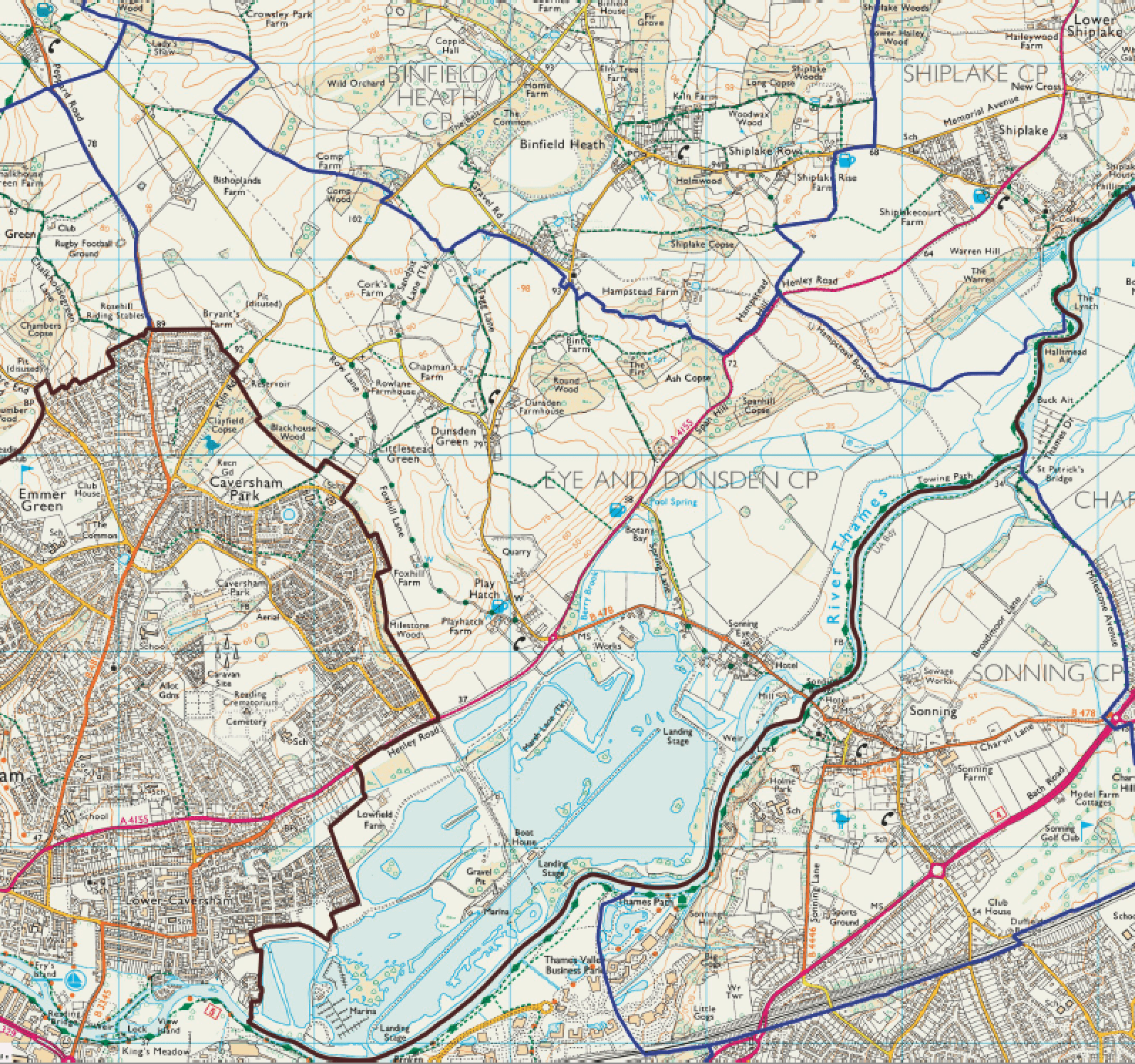
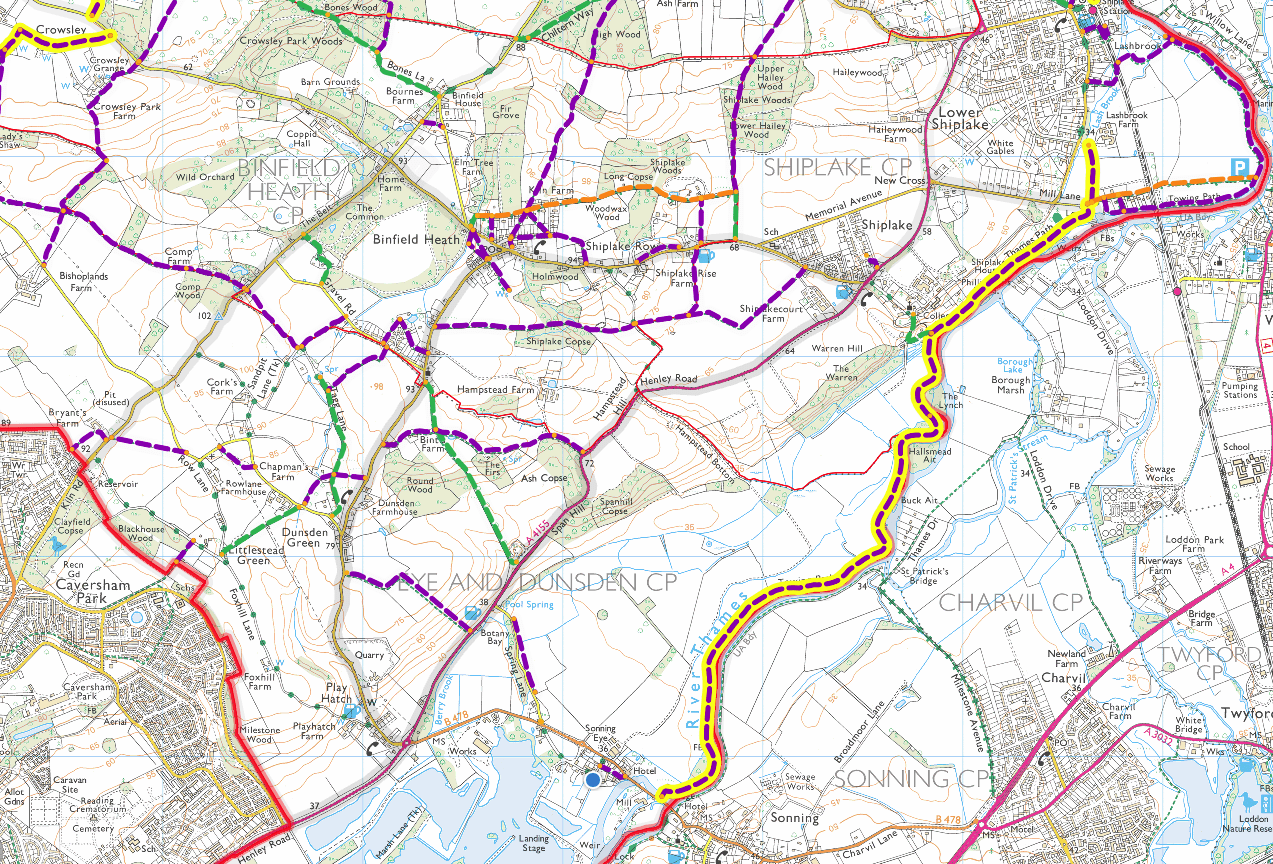
The parish council is made up of five unpaid volunteer members, who are looked after by a paid Clerk. We meet monthly except in August and December in Eye & Dunsden Village Hall. Meetings are usually on the second Tuesday of each month at 7.45pm.
The parish council sets a budget which is its part of your Council Tax bill and amongst other things, uses this money to look after a number of open spaces in the parish as well as to make small grants to local organisations.
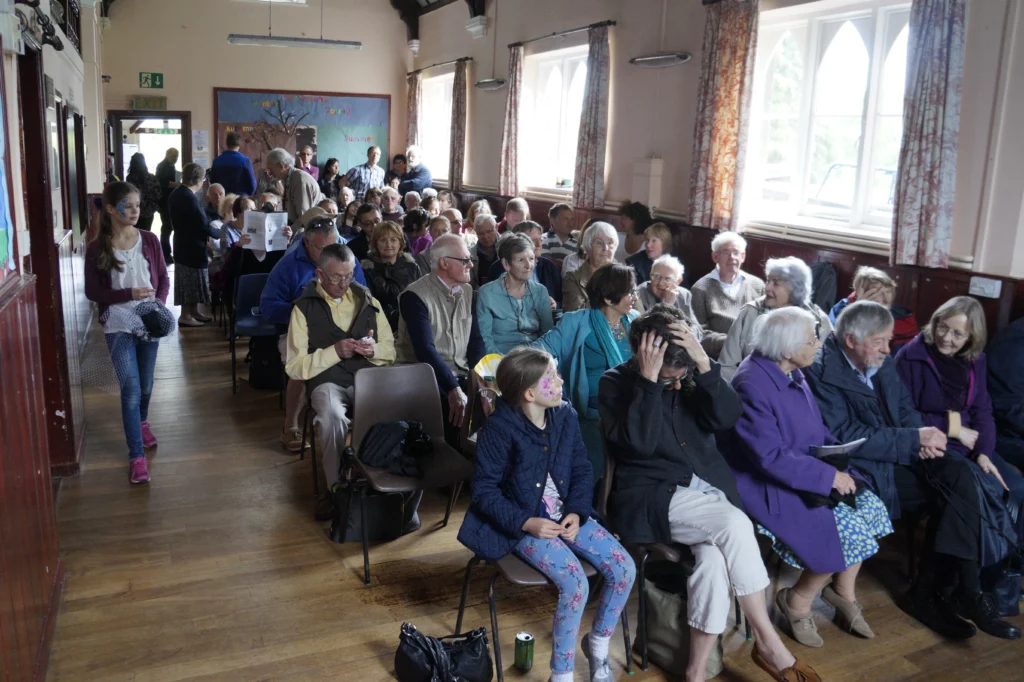
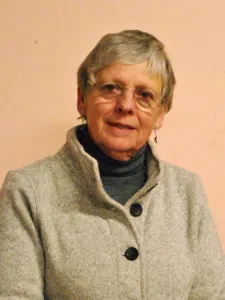
The Glade,
Remenham Piece,
Remenham Hill,
Henley on Thames
RG9 3ET
clerk@eyedunsden.org
01491 412908
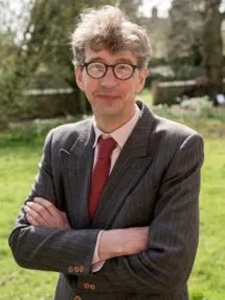
Long Gardens,
Sonning Eye
Reading RG4 6TR
chairman@eyedunsden.org
0118 969 3633
External responsibilities:
Trustee of Village Hall, Trustee of Robert Palmer Almshouses, Trustee Sonning and District Welfare and Education Trust, NDP, Tarmac Liaison Group, JPAG

External responsibilities:

Sonning Eye

Sonning Eye
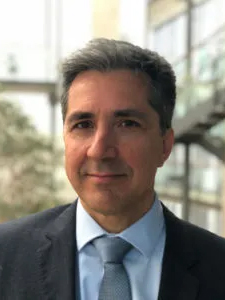
2 Spring Cottages,
Tagg Lane,
Dunsden
David Woodward
Ian Pringle
All councillors assume other ad hoc responsibilities as required.
In 1848, Samuel A. Lewis described Eye & Dunsden as:
“a liberty, in the parish of Sonning, union of Henley, hundred of Binfield, county of Oxford, 5 miles (S. by W.) from Henley.”
A Topographical Dictionary of England
The original ecclesiastical parish of Sonning was 11 miles long, extending all the way from Sonning Common in Oxfordshire to Lower Earley. As well as Eye & Dunsden, the parishes of Earley, Woodley and part of Kidmore End were all once part of the church parish of Sonning.
The civil parish was created in 1894, under the Local Government Act of that year. The election was not contested, so Ilted Witherington of Sonning Mill became the first Chairman, and the Vicar, Richard Hart-Davis, was the first Vice-Chairman.
In 2003, the Binfield Heath part of the parish was joined with part of Shiplake parish to create the new parish of Binfield Heath (pop. 709). In the 2011 census, the parish of Eye & Dunsden is recorded as consisting of only around 160 houses, with a population of 366 people.
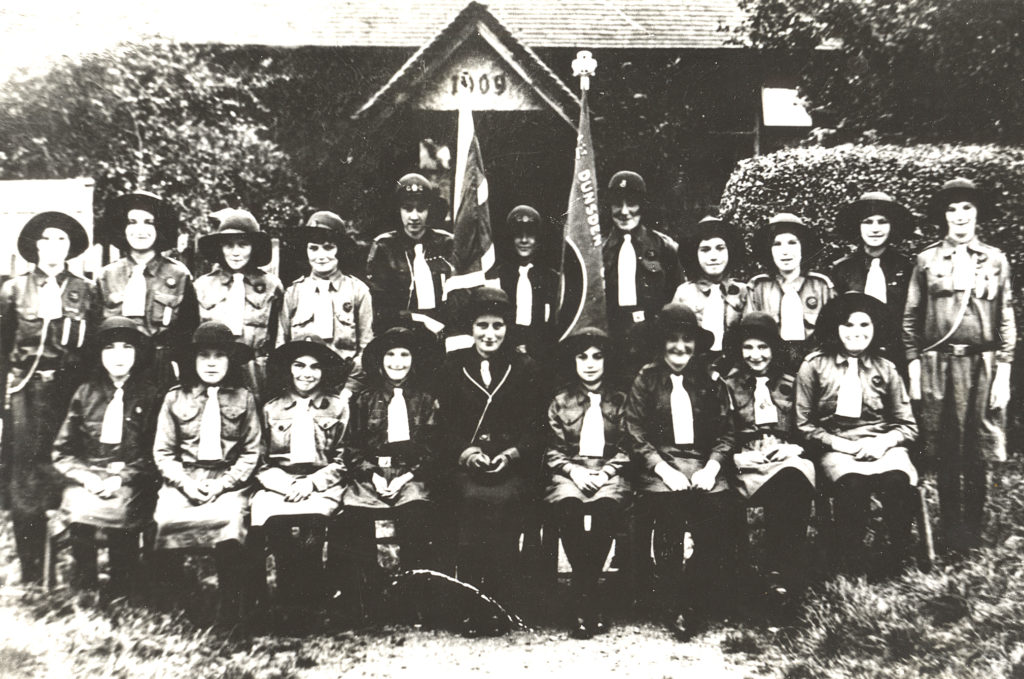
2019 marks the 150th anniversary of the laying of the foundation for the main hall, which was originally built as a second classroom for Dunsden school. An anniversary booklet describing the hall’s story is available as a PDF here.
William Payne
In 1709 William Payne by will gave £10 a year, chargeable on a farm called Milwards in Sonning Eye, of which £5 10s. is received from Mr. W. T. Crawshay of Caversham Park and £4 10s. from Mr. Godfrey Phillimore of Sonning. The sum of £2 10s. a year, under the title of the ecclesiastical charity, is applied as to £2 for a sermon on the Sunday next before or after St. James’s Day and 10s. to the clerk. The income of the non-ecclesiastical charity was applied as to £2 10s. in money gifts to the poor of Sonning and Dunsden and the residue in apprenticing when applied for.
British History Online
Soon after the water mill at Sonning was sold in 1969, this charity was wound up.
Robert Palmer’s almshouse charity
In 1872 Robert Palmer by his will and a codicil thereto proved at London 26 December in that year bequeathed £4,000 consols, the income to be applied in paying 7s. weekly to the inmates of an almshouse which he had erected in the village of Sonning and the residue in the upkeep of the almshouse. The endowment consists of the site, containing 2 r. 27 p., and the almshouses thereon, conveyed by Susanna Caroline Palmer to trustees by deed 27 September 1877 (enrolled), upon the trusts of her brother’s will, and a sum of £4,092 14s. 3d. India 3 per cent. stock, producing yearly £122 15s. 4d. The charity is regulated by a scheme of the Charity Commissioners, 29 July 1898. British History Online
Places in the almshouses continue to be available to residents of Eye & Dunsden.
There’s a great deal of interesting information about the history of the parish in the smartphone trail created by the Dunsden Owen Association about the time the celebrated WW1 poet Wilfred Owen spent here.
To mark the millenium in the year 2000, the parish council commissioned a history of Eye & Dunsden from Brian Law, an established local historian. A copy was sent free of charge to every house in the parish. Secondhand copies of Eye and Dunsden, Two Centuries of Change in an Oxfordshire Parish (2001) can sometimes be found on Abebooks, Amazon or Alibris
Stephen Mileson has written a history of the parish which is included in volume XX of the Victoria County History of Oxfordshire.
Dunsden’s phone kiosk is a model called the K6 which was designed by Giles Gilbert Scott for the General Post Office. It was known as the Jubilee kiosk as it was first made in 1936 to commemorate the silver jubilee of King George V. The K6 kiosk is made from cast iron with a teak door. It is 8’3″ tall (2.4 metres), 3′ wide (0.92 metres) and weighs three quarters of a ton (762 kilograms).
The parish council has bought it from BT for £1 with the aim of converting it to an information point, both for community news and for visitors to the area.
In 1953 Queen Elizabeth II decided to replace then current Tudor Crown with a version of St Edward’s Crown, the actual crown used for coronations, and this new symbol therefore began to appear on K6 kiosks. Protests in Scotland over the use of a British insignia caused the GPO to issue a revised design in 1955, and this is the version on Dunsden Green. It has a slot which allowed either the Scottish Crown or St Edward’s Crown to be inserted.
A more precise date has so far been impossible. Some kiosks bear a foundry mark and date, but this does not seem to be the case for the Dunsden kiosk. Since the 1990s BT has been painting the royal crown on its phone boxes gold, in recognition of their heritage value.
The only other phone box in the parish is in Playhatch. Because it is next to Playhatch House, which is Grade II listed, the kiosk at Playhatch is also listed, and continues to be maintained by British Telecom.
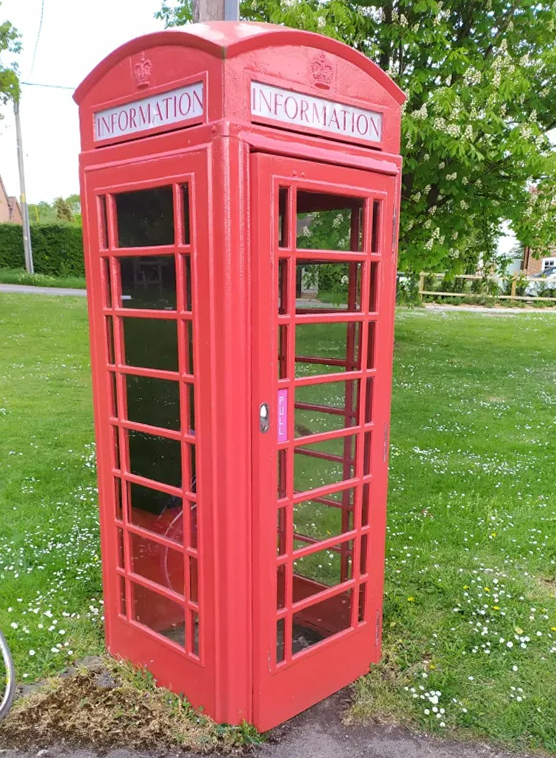
2019 marks the 150th anniversary of the laying of the foundation for the main hall, which was originally built as a second classroom for Dunsden school. An anniversary booklet describing the hall’s story is available as a PDF here.
With thanks to Hampstead Norreys History & Heritage
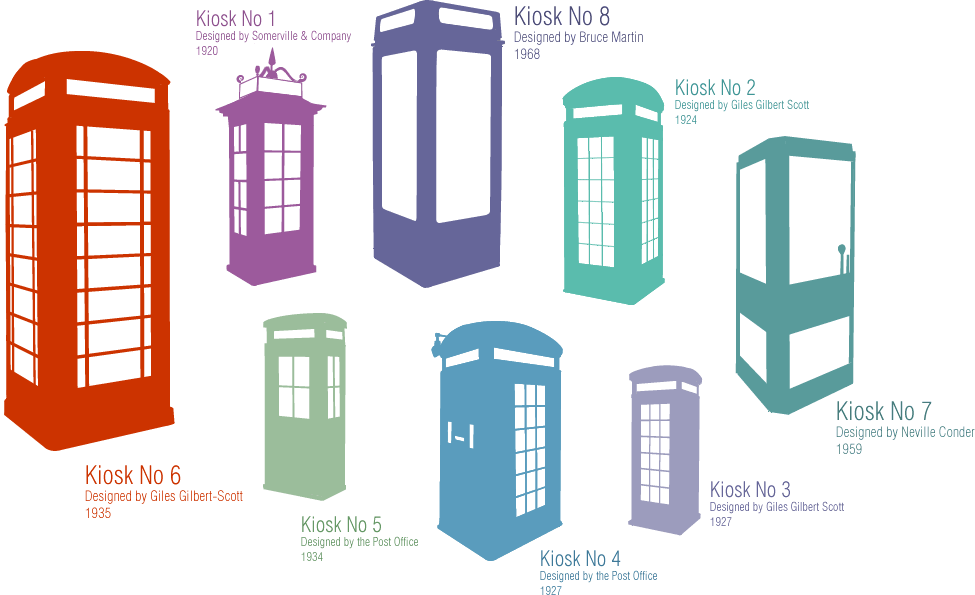
In 1912 the General Post Office (GPO) took over an ever-expanding telephone network and decided telephone boxes should have a uniform appearance. Some nine years later the Kiosk Number One – or the K1 – was introduced.
In 1923, the GPO held a competition to design a new kiosk and designs from many companies and architects were entered. It was not until 1926, however, that their chosen design first appeared – Giles Gilbert Scott’s K2. Unfortunately this model proved too big and very expensive for mass production. The GPO was still keen to have a new design and once again commissioned Sir Giles to produce another design. In 1929 the K3 appeared, a smaller, concrete version of the K2 and this time the kiosk was an immediate success, with 12,000 appearing countrywide.
The K4, nicknamed the Vermillion Giant, was intended to be a 24-hour post office, with a stamp machine and letter box added to the back. It too proved to be a dismal failure, with only 50 being produced and was soon withdrawn.
In 1934, a K5 was produced, made of plywood as a temporary kiosk for use at exhibitions and fairs etc. It was only in the 1990s that the designs of this box were rediscovered and it is not known if any originals still survive.
There were many K3s still in use but problems were beginning to occur with them, and the GPO considered that a new cast iron box was needed. Giles Gilbert Scott was again asked for a design.
In 1936 the K6 appeared for the first time on the streets. The kiosk was perfect, with all the good points of the K1 and K3 together with the solidity of the K2 and most importantly, the small size and elegance that the GPO were looking for. The K6 was widely used and by the end of production, there were nearly 70,000 in Britain. Many areas didn’t first approve of the red paint and so were allowed to paint them in alternative colour schemes. Subsequently the iconic ‘post office red’ became ubiquitous.
The K7 – planned in 1959 – was designed by Neville Condor. It was an innovative design in its use of materials and six prototypes were produced in aluminum. It was eventually first produced in 1962; however the British climate caused discolouration and staining of the aluminum so the design didn’t prove successful and very few were introduced on to the streets of Britain.
The K8 was introduced by the Post Office in July 1968. Two designers, Douglas Scott and Bruce Martin, having been commissioned in 1965. The chosen design had to incorporate the best features of previous designs and be suitable for both urban and rural surroundings.
Bruce Martin’s design was eventually selected and when introduced had been produced in just over one year, the shortest time then taken to create a new kiosk. It was made from cast iron and contained full length toughened glass, and became the successor to Kiosk No. 6 (the K6).
© 2023. Eye & Dunsden Parish Council